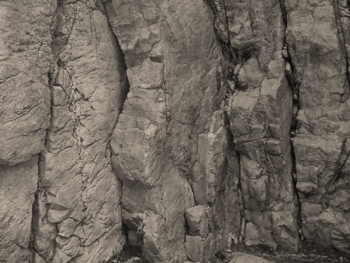What is the difference between a joint and a fault?
Related questions
Question
What is the difference between a joint and a fault?
Expert Solution
Step 1
- Joint, geologically, the surface of brittle cracks in rocks, where there has been little to no displacement.
- Presently on almost all surfaces, joints stretch further towards the vertical than towards the horizontal in different directions. Joints can be smooth, white, or scarred by striations or slickensides.
- At approximately 12 kilometers, even rigid rocks appear to flow in plastic response to the stress, because joints are relatively unobtrusive in unweathered rocks, but are marked at weathering, particularly in the soluble rocks such as calcite.
- The solution of the joints by water has contributed to the creation of large cellars and underground channels. The existence of a well-developed joint structure promotes quarry operation.
- Sedimentary rocks typically have two joints in the right angles, one stretching perpendicular with the bedding; one joint bends in a dip direction and the other in a striking direction. The gap between joints ranges from roughly 2 centimeters to a few more than 100 meters.
- In igneous rocks, the joint is typically very irregular, but in granite two vertical couples on the top surface create a right corner, with another pair of cross joints almost horizontal.

Fig 1: Joints along the rock structure
Step 2
- In geology, a smooth or slightly curved fracture along the rocks of the earth crust induces a relative displacement of rocks on the other side of a fracture of compressive or tensile forces.
- Faults vary from a few centimeters to several hundred kilometers and movements of less than one centimeter to a variety of centuries on the surface of the fracture (the fault plane).
- The movement is spread in some instances across a defect zone consisting of a large number of defects that stretch a belt a hundred meters across.
- The spatial distribution of faults varies; some wide regions have virtually zero, and others have numerous faults.

Figure 2: Faults along the rock structure
Step by step
Solved in 3 steps with 2 images
